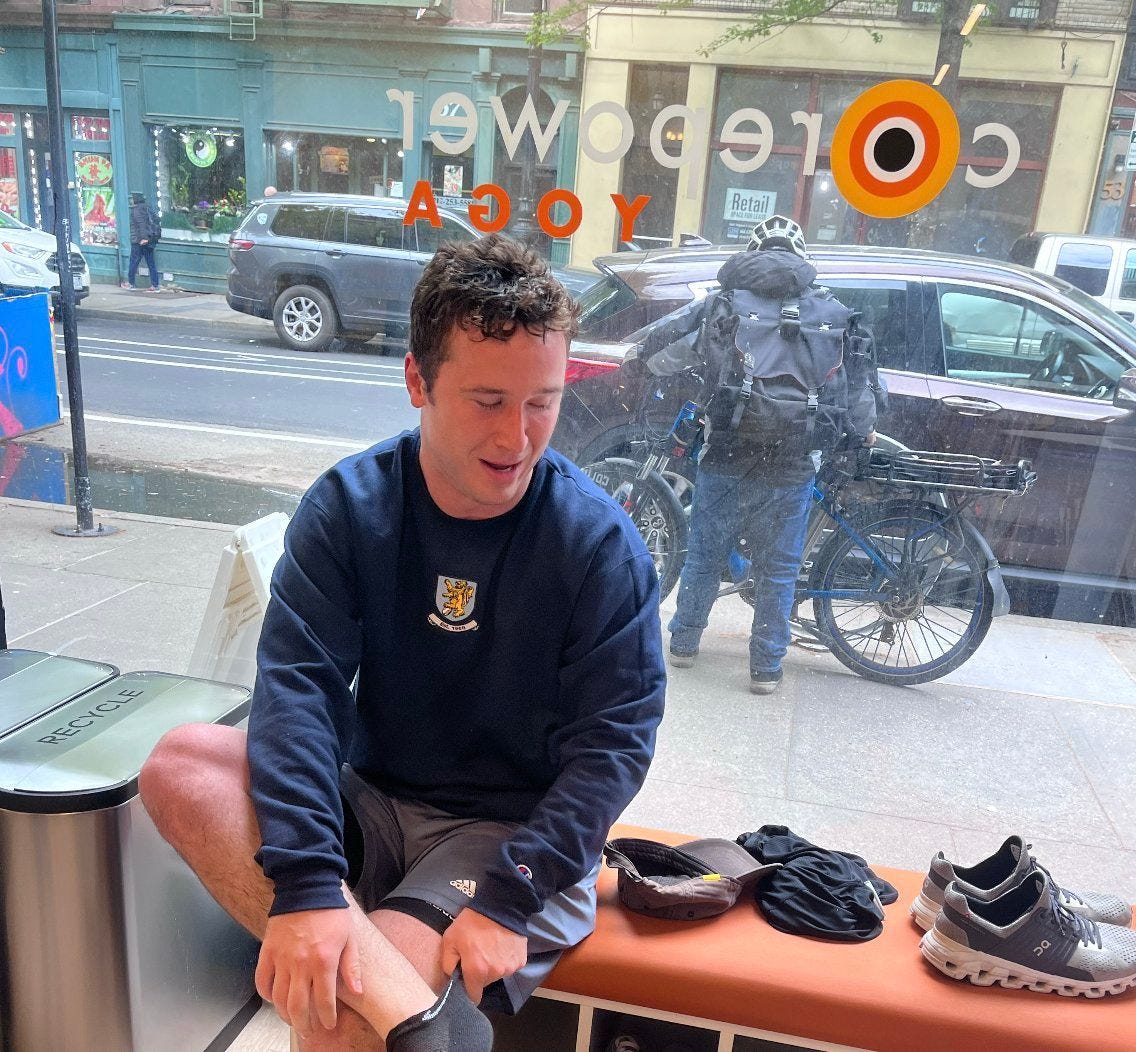Welcome to Young Money! If you’re new here, you can join the tens of thousands of subscribers receiving my essays each week by adding your email below.
In August 2021, I flew to Barcelona to kick off what would become a four-month journey across Europe. I had no plans and no income, and I intended to stretch my money as far as possible by hopping from hostel to hostel and eating as many gyros as my stomach could handle.
Like most European cities, Barcelona is best explored by foot. You can start your day playing volleyball or hitting the outdoor gym at Barceloneta before shopping and sampling food up and down La Rambla, then spend your afternoon exploring Park Güell before a night wandering around the city’s Gothic Quarter.
Cobblestone streets, steep staircases, and narrow alleyways are the norm in the oldest parts of the city, so the key to maximizing your time in Barcelona is being able to physically get around and see everything.
Barcelona is a popular tourist destination in August, as folks from all over the world flock to Catalonia’s capital city to enjoy warm weather, beautiful beaches, international cuisine, vibrant nightlife, and foreign culture. Located on the Mediterranean Coast, Barcelona is a also cruise ship hotspot, with millions of seafaring tourists visiting via ship each year.
And one group of tourists loves cruises more than all others: senior citizens.
If you hang out near Barca’s Christopher Columbus statue on a warm July morning, you can watch thousands of these passengers disembark their buoyant fortresses and make their way to the city.
Some briskly march down the pier, excited to marvel at La Sagrada Familia.
But others, aided by canes, poles, and electrified wheelchairs, struggle to get from their ship’s offramp to the other end of the dock, let alone traverse the city itself. The steep, uneven, cobblestone streets that awaited them?
Good luck.
I was paying $15 per night for a bunk bed in a 10-man room in St. Christopher’s Hostel, while many of those cruise passengers were paying hundreds of dollars per night for their master suites on the water. Our accommodations were night and day.
But as I watched the elder tourists struggle to get around the city, I realized that no amount of money could entice me to switch places with them.
Medical researchers use a measurement called “quality-adjusted life year,” or QALY, to evaluate the impact of illnesses, conditions, lifestyle choices, and medical interventions on one’s quality of life.
(Shoutout to my dudes, Antonio and Ben, for introducing me to QALY)
A QALY of 1 means one year in perfect health, while a QALY of 0 equals death.
QALY tends to decline with age because our likelihood of developing conditions like impaired vision and mobility, or illnesses like cancer and dementia, increases with time. Your QALY could also decline as a result of an accident: someone who lost their legs in an automobile accident may initially have a QALY of 0.5, but prosthetic limbs and rehabilitation could improve their QALY to 0.8. You get the idea.
This QALY metric relates to our money and our time as well.
I’ve written a lot about opportunity costs and the tradeoff between our time and our money, but health is the multiplier that determines just how valuable our time and money are.
If you have 50 years to live or millions of dollars to your name, but you’re bedridden with chronic illnesses, your time and money lose most of their utility. Without good health, the value of both of these assets is effectively zero.
So why do we pay so little attention to health?
Because it’s hard to evaluate “health.”
Money is a seductive scoreboard because it is the one form of wealth that we can see and quantify. I could ask you, “How much money do you have?” or “What’s your salary?” and you could answer by stating a single number.
If I asked you, “How much health do you have?” you would look at me like I was crazy. And because we can’t easily measure health, it often gets neglected. Working long hours comes at the expense of our time in the gym. We eat fast food to save time and money.
But much like investment returns compounding over time, our health decisions compound too. Poor health decisions in your 20s and 30s yield disastrous outcomes in your 40s and 50s, but the consequences of our actions aren’t obvious until they’re irreversible.
Confucious once said, “A healthy man wants a thousand things, but a sick man only wants one,” and that’s the truth.
Our problem is that we live in a really weird time where obesity is the norm and the average consumer’s diet and fitness level couldn’t be worse, but our advanced medications allow us to survive in these unhealthy states pretty much indefinitely.
But as the QALY scores demonstrate, a prolonged life spent dealing with deteriorating health is a poor way to spend one’s time.
Your health determines your ability to enjoy the opportunities offered by your time and money, a thought worth considering in our world that loves to put health on the back burner.
And yes, this blog was inspired by my hungover yoga sculpt session at CorePower yesterday. It kicked my ass but also I’m marginally healthier than I otherwise would have been.
- Jack
I appreciate reader feedback, so if you enjoyed today’s piece, let me know with a like or comment at the bottom of this page!
Young Money is now an ad-free, reader-supported publication. This structure has created a better experience for both the reader and the writer, and it allows me to focus on producing good work instead of managing ad placements. In addition to helping support my newsletter, paid subscribers get access to additional content, including Q&As, book reviews, and more. If you’re a long-time reader who would like to further support Young Money, you can do so by clicking below. Thanks!





